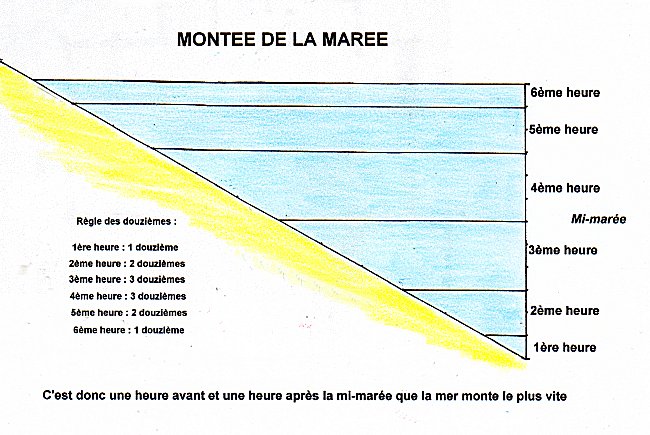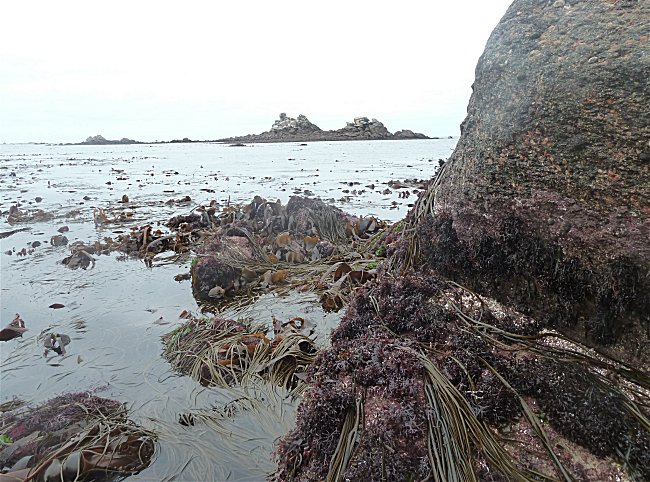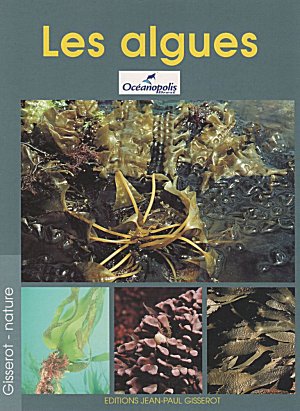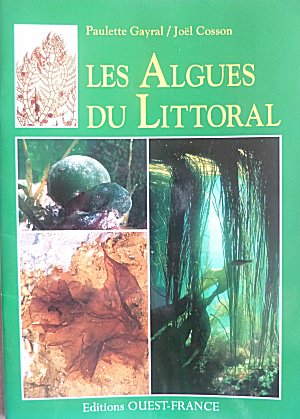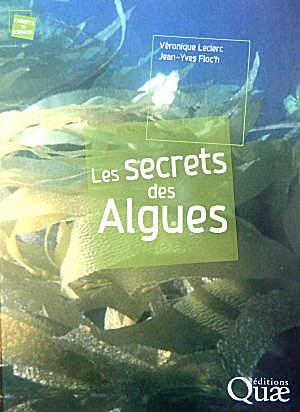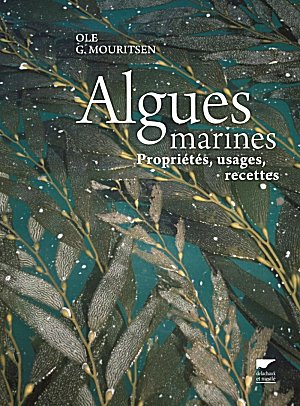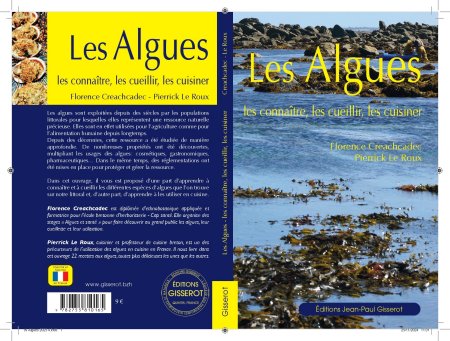Access :
It is not enough to go to a beach at low tide to discover seaweeds. The foreshore must still be rocky. Many points along the coast of the Iroise Sea meet this requirement. Let's take as an example the beach of the village of Porspoder. You can access it by leaving the D27 just in front of the church, which stays on your left. Continue on this street and turn first left. Park in front of the beach.
GPS :
48°30'40.5 N 4°46'00.4 W
For each of us, the flora is composed mainly of terrestrial plants. But underwater, whether fresh or salt water, seaweeds and eelgrass meadows2 also make up a very abundant vegetation essential to all aquatic life. And when we know that marine flora is responsible for more than a half of the oxygen production of our planet, we understand the importance of these plants, which are still too little known. However, man has long used them as fertilizer in fields and gardens.
The Iroise Sea, wonderfully endowed with both a large continental rocky plateau and an exceptional mixing of its waters, offers the largest kelp field in Europe. The Pays d'Iroise is in first place of the seaweeds-producing regions of the country. Algae are therefore part of our heritage.
Among the hundreds of seaweeds known in the Iroise Sea, many are microalgae that are not visible to us. On the other hand, kelp can reach several metres in length in Brittany. Apart from these extreme cases, the marine flora presents a very great diversity of species, most of which are totally unknown.
Long used to extract iodine from it, used in particular to make iodine tincture, seaweeds are now used in cosmetics and pharmaceuticals. There is no longer any doubt that many of them are destined to become our future food too. Food gelling agents are already extracted from them and Asian cuisine has been using them for a very long time. They contain so many nutrients that humans will increasingly turn to their harvesting and production to feed a constantly growing world population. 3
Only a few of them are presented on this site, the ones that are most frequently found on our coastline and that it is good to be able to identify. Be careful, however, it is always the living seaweeds, fixed to a stone, another seaweeds or a rock that must be observed or possibly collected. Those that float or are deposited on beaches are not suitable for consumption.
Conferences, numerous sites as well as more or less specialized books exist that will delight amateurs who are a little more curious. But the most interesting thing is to participate in the seaweed reconnaissance outing organised in the summer by associations, tourist offices and eco-museums, especially during lowest tide periods. Nothing beats practical knowledge under the guidance of a specialist who will be able to replace the Latin names difficult to remember with the common names of the Pays d'Iroise and who will add to his botanical words a touch of culinary advice to lick your lips...
To know everything about seaweeds, don't miss visiting the Seaweed House on the port of Lanildut. Free admission.
The Seaweed House
Outside the Pays d'Iroise, in Plouguerneau, there's also a very rich and comprehensive Musée des goémoniers, which will delight visitors.
The seaweed museum
You can also find useful culinary information on Scarlette Le Corre's Food'Algues website
:
alguerie.com
A participative website has also recently been launched. We advise you to visit this Breton site :
seaweeds cooking
-1-
There are so many different marine seaweeds species that only the most common are presented here. They can be found on the foreshore, i. e. in the area that is discovered at low tide, as well as even lower, up to about thirty metres deep, as far as the daylight, which is essential for their development, can penetrate.
-2-
Eelgrass is a marine plant with flowers. They form meadows in sandy or muddy areas. With roots or rhizomes ( underground stems ) and a circulation of sap, they are very different from seaweeds and more similar to terrestrial plants.
-3-
Cooking seaweed requires a little training. There are a few recipe books.
Bibliographie : Yves GRUET :
"Algues, Loire-Atlantique, Vendée". Bulletin de la Société des Sciences Naturelles de l'Ouest de la France.
Thanks to Marie-Hélène COLIN-MARECHAL and Florence CREAC'HCADEC for their help and loan of documents.
Yannick Loukianoff





